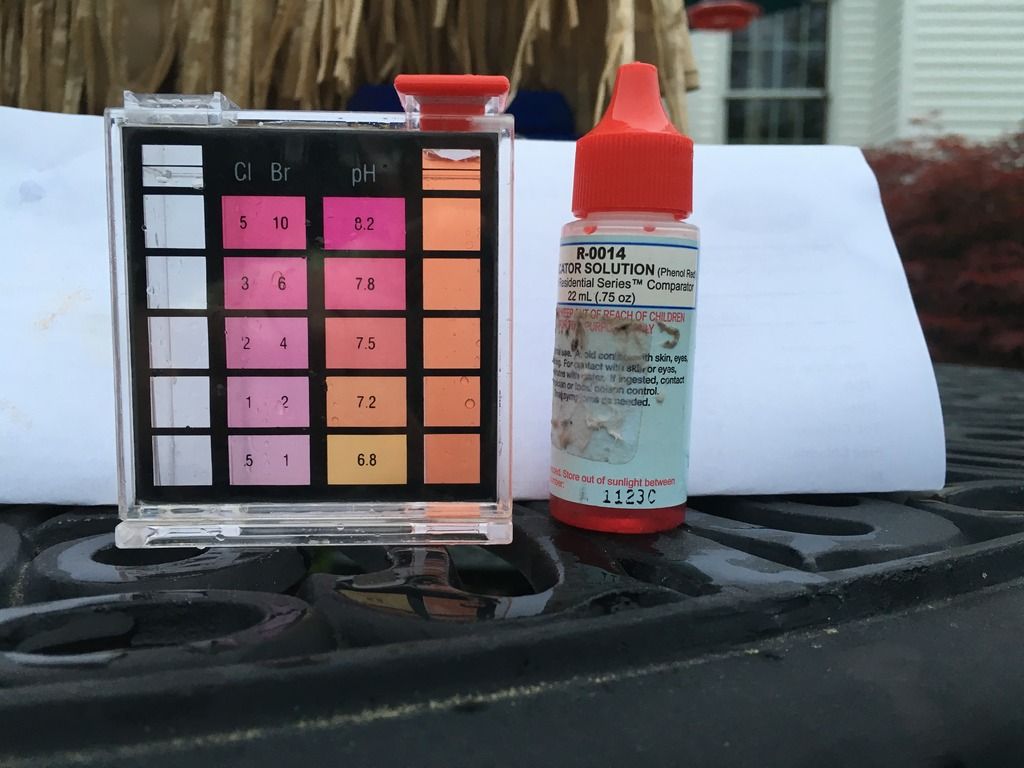I'm having a real hard time with this test, I got the TFT-100 and this test gives me the most problems. It changes dramatically depending on the background I use and it's very hard to test what is right. If I use a white background like a piece of paper, it looks quite red for pH (I'm guessing it would be read as 8.2) if I use the sky, it's more like 7.6-7.8 range.
Chlorine is similarly difficult at the higher numbers.
Is there any rule of thumb to get consistent and accurate results? I feel this test is always a guess when it comes down to it and I never feel comfortable with the answer.
Chlorine is similarly difficult at the higher numbers.
Is there any rule of thumb to get consistent and accurate results? I feel this test is always a guess when it comes down to it and I never feel comfortable with the answer.


